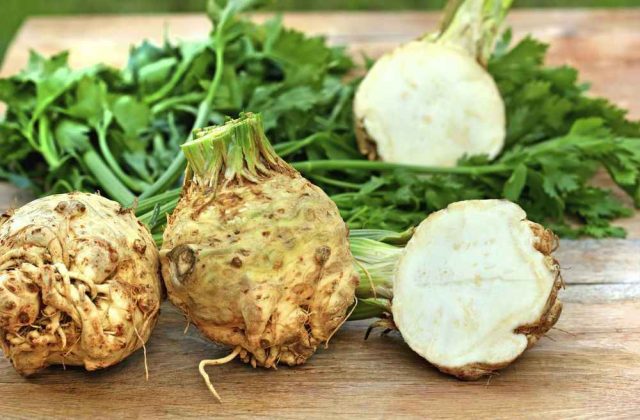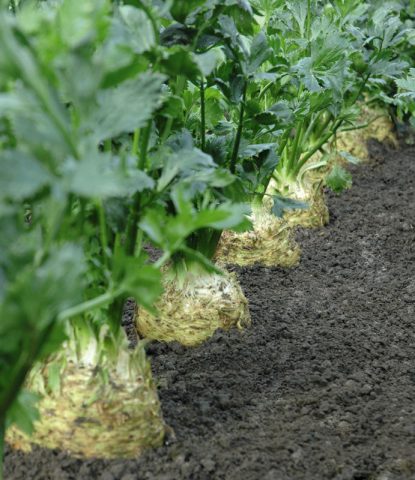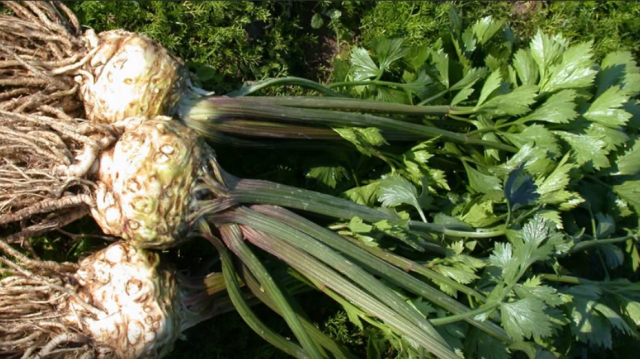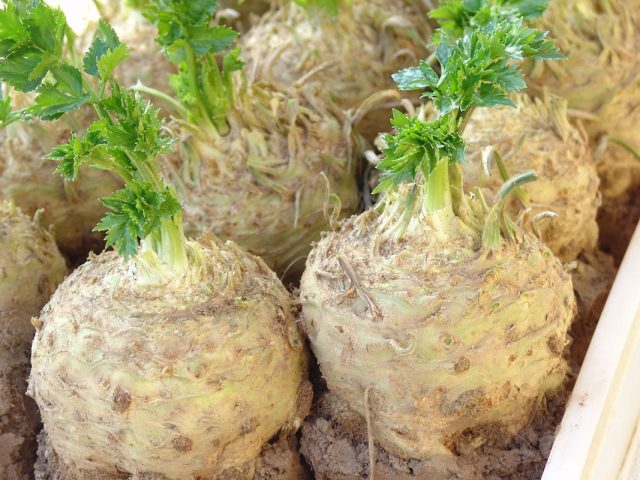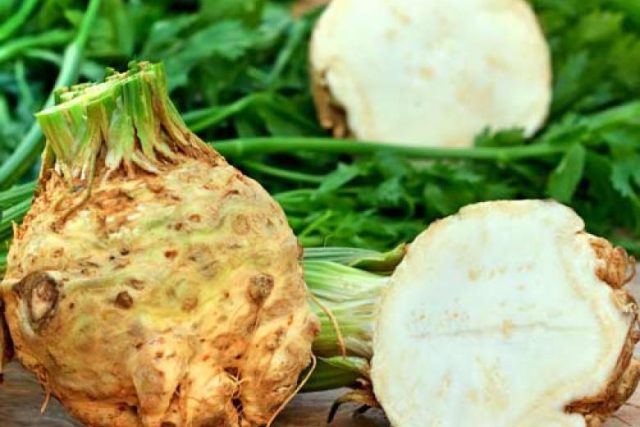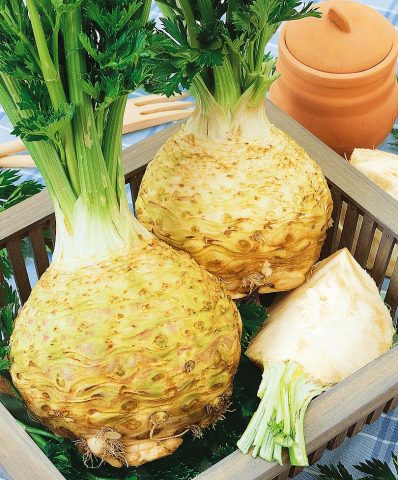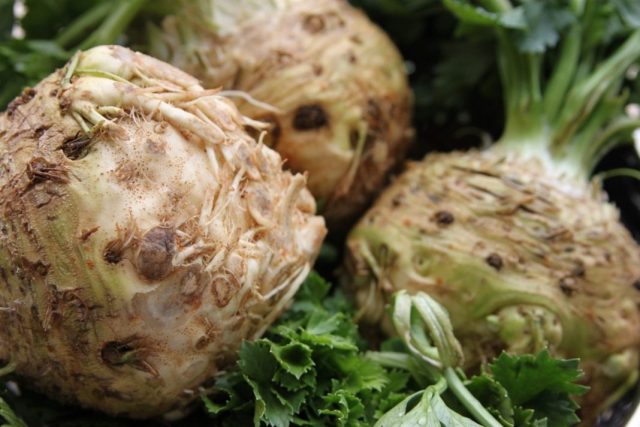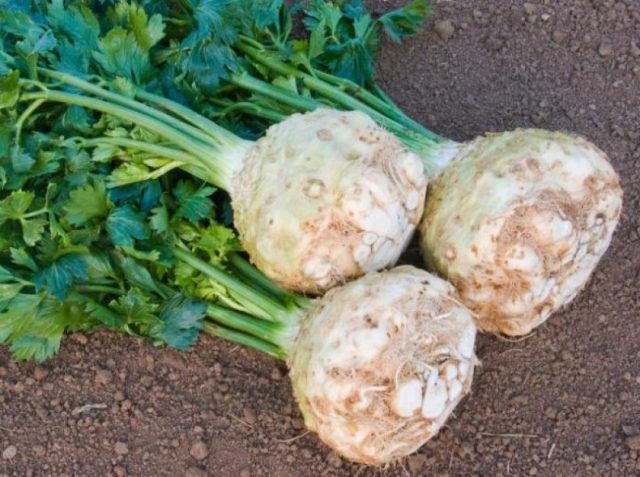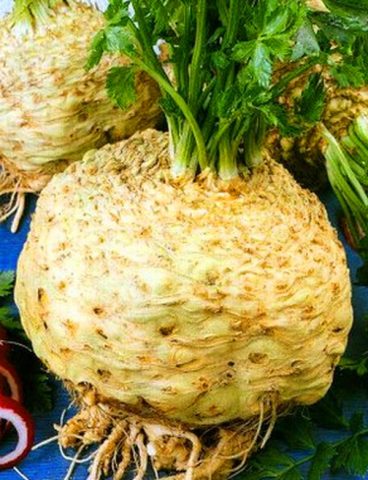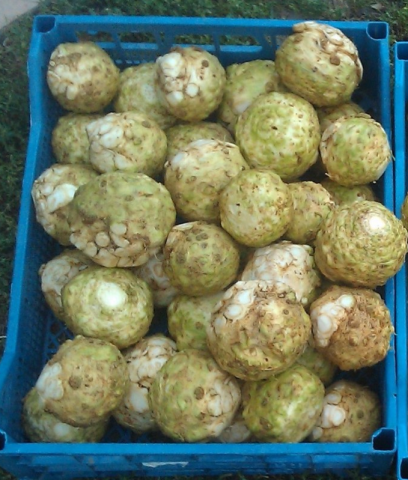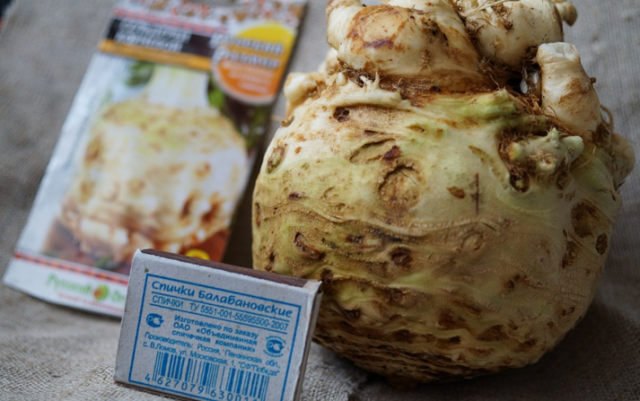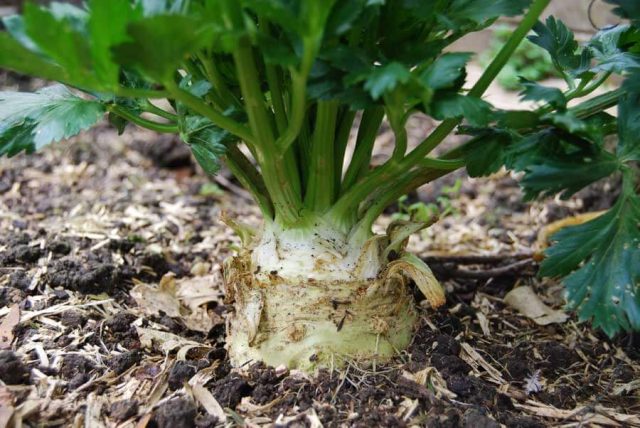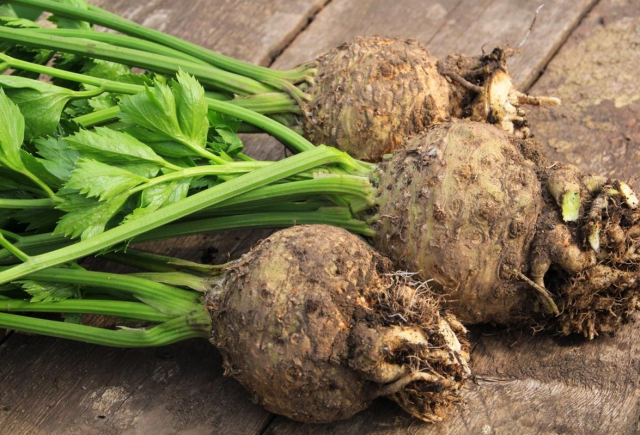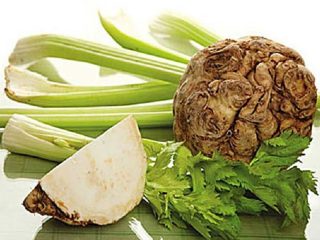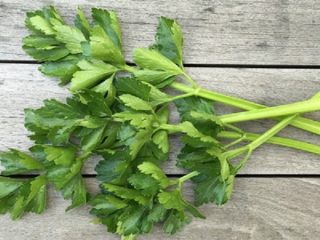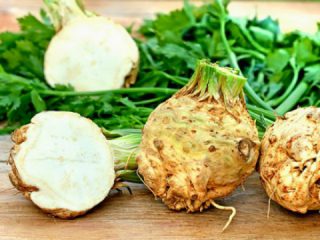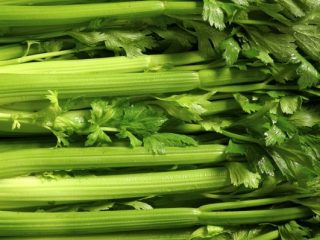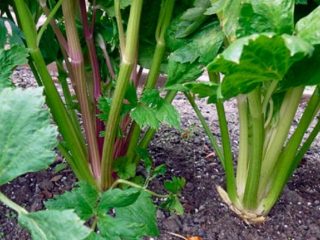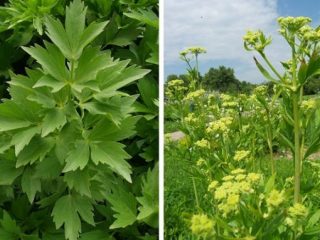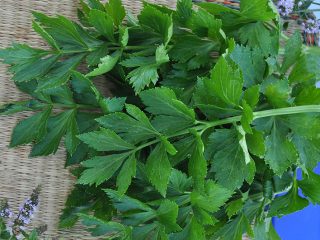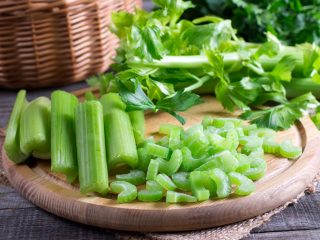Content
Celery root is a healthy and tasty vegetable. It is grown for its large root crops, which have a spicy smell and taste. The culture is unpretentious and ripens in any weather conditions. A photo of root celery and its characteristics will help you choose the appropriate variety for growing on your site.
Variety of celery root varieties
Celery is a biennial plant that belongs to the Apiaceae family. The Mediterranean is considered its homeland. It became widespread in Russia during the time of Catherine II.
Root varieties form a powerful root crop with a diameter of up to 20 cm. A rosette of leaves up to 50 cm high grows above the ground. The root crop has a thin skin, the flesh is usually white or yellowish. Lateral roots extend from it. Flowering occurs in July and August. The harvest is harvested in September.
Depending on the ripening period, all root varieties are divided into groups:
- early ripening;
- mid-season;
- late.
For personal use, early hybrids are chosen.If vegetables are left for storage, then preference is given to middle and late varieties. In the middle zone and in the south, different types of crops are grown. For northern regions, it is not recommended to choose late varieties, as they will not have time to ripen.
Old varieties of celery have many lateral roots. They take away a lot of useful substances and prevent the root crop from forming. Gardeners must rake the soil around the celery root and remove the suckers by hand.
To avoid unnecessary work, choose varieties without lateral roots or with small shoots. Basically, these are new hybrids that form aligned root crops.
The best varieties of celery root
When choosing celery for planting, its yield, quality of root crops, and disease resistance are taken into account. Most varieties are included in the state register.
Celery root Diamant
A mid-early root variety, the growing season is 150 - 160 days. The height is average, the plant is slightly spreading. The leaves are green, large, and the petioles are not very long. The vegetable is round in shape, powerful, gray-yellow in color. A popular variety of root celery without lateral roots. Root vegetables weigh from 200 to 300 g. The pulp is snow-white and retains its color after cooking.
Diamant celery root is valued for its good aroma. The plant does not shoot arrows and rarely suffers from septaria. Productivity per 1 sq. m of plantings ranges from 2.3 to 4.0 kg. The variety is included in the State Register and recommended for cultivation in all regions of Russia.
Celery root Egor
Root celery Egor produces a harvest in medium terms: the period from the appearance of sprouts to technical ripeness takes 175 days. The leaves are collected in a semi-raised rosette.Celery is round, powerful, grayish-yellow, with a smooth surface. Weight from 250 to 450 g. The pulp is white, aromatic.
The root variety Egor is characterized by productivity, high content of sugars, essential oils, and mineral salts. From 1 sq. m are removed up to 3 kg. The hybrid is recommended to be grown in the Central, North-Western and East Siberian regions.
Albin
A well-known root variety of Czech selection. Ripens on average 160 days after germination. Forms rounded root crops, up to 13 cm in girth. The pulp is white, aromatic, retains color after heat treatment. Leaves up to 40 cm high are used as greens for salads and other dishes.
The root variety Albin contains minerals, organic acids, and vitamins. The lateral roots are few and located in the lower part. The harvest is harvested in September - October. The Albin variety is suitable for planting in all regions.
Anita
Industrial variety of root celery. Forms aligned root crops weighing from 300 to 400 g. The leaves are collected in an erect rosette. The pulp is snow-white, juicy.
Root celery Anita ripens in the mid-late period. The culture is resistant to cold, tolerates temperatures down to +4 °C. The plant is sensitive to moisture deficiency and prefers light and fertile soil. The harvest is stored for a long time in a cool place.
Gribovsky
The oldest root variety obtained by domestic breeders. Ripening is medium early, no later than 150 days. Forms root crops of round shape and weighing up to 150 g. Few side shoots are formed. The pulp has a pleasant aroma, white color and good taste.
The Gribovsky variety is valued for its unpretentiousness and stable yield.It is used fresh and dried for the winter. Vegetables are stored for a long time in cool conditions. The Gribovsky variety is suitable for growing in various regions.
Esaul
Root celery Esaul bears fruit in medium terms. The crop reaches technical maturity 150 days after emergence. The vegetables have a round shape and an average weight of 350 g. The maximum weight is 900 g. The color is whitish-gray, the surface is smooth, the lateral roots are located in the lower part of the root crop.
Celery Esaul is easy to harvest due to its average immersion in the soil. The pulp contains essential oils and minerals. The yield of the Esaul variety reaches 3.5 per square meter. m. Purpose: table, suitable for side dishes and salads.
Cascade
Cascade root celery was bred by Dutch breeders. Ripening is mid-early, the growing season is 150 days. It has low roots, which makes cleaning easy. The rosette is high and raised. The leaves are large and green. Vegetables are round, white, medium in size. The pulp is whitish and does not change color during cooking.
The Kaskade variety is recommended for cultivation in the Central region. Productivity is high, up to 3.5 kg per 1 sq. m. Resistance to cercospora blight is high. Vegetables tolerate storage and transportation well.
Prague giant
A root variety of mid-early fruiting, it produces a harvest 150 days after seed germination. The Prague giant is distinguished by its large size and weight up to 500 g. The pulp is aromatic, rich in vitamins, and has a delicate taste.
Prague giant celery is resistant to cold weather and grows best in sunny areas. Seeds are planted in beds in April or May. From 1 sq. m are removed up to 4 kg. The harvest is stored for a long time after harvesting.
The president
The President variety was bred by Dutch specialists. Ripens in medium terms. The vegetables are large, weighing up to 500 g, round and smooth. The core is dense, white. The taste is delicate and piquant. The leaves are medium, dark green. The crop is easy to harvest and clean.
Celery President gives a yield of 3.3 kg per 1 sq. m. The plant is resistant to adverse conditions. The variety prefers sunny areas with fertile soil. Recommended for planting throughout Russia.
Russian size
Celery Russian Size is large in size. Some specimens reach a mass of 2.5 kg. The yield is affected by the planting location: light, light fertile soil.
The pulp is juicy, with a pleasant aroma, and has a slight nutty flavor. On average, the weight of the Russian Size variety ranges from 0.8 to 1.3 kg. The harvest is harvested in September. The hybrid is suitable for growing in the middle zone and colder regions.
Strongman
Celery Silach is medium-late ripening. The harvest is harvested 140 days after seed germination. The leaves are powerful, dark green. The vegetables are round, yellow in color, weighing from 90 to 200 g, reaching 12 cm in girth. Inside, the core is juicy and white.
The Silach variety is grown throughout Russia. Productivity ranges from 2.3 to 2.7 kg per square meter. Fresh and dried celery is used in cooking. Vegetables are harvested as they ripen.
Apple
A well-known root hybrid, included in the State Register in 1961. Ripens early, within 120 - 150 days after sprouts appear. It has a spicy aroma and good taste.The rosette consists of 20 dark green leaves.
Vegetables are round, slightly flattened. The pulp is juicy, white, with a delicate aftertaste. Average weight - 150 g. The harvest is well stored and transported, retains its taste when dried.
Root celery varieties for Siberia
Root celery is a cold-resistant crop that grows successfully in Siberian conditions. For planting, early and mid-fruiting varieties are selected. It is best to grow hybrids that do not have lateral roots.
In Siberia, celery root seeds are planted in early February. The first shoots appear after 14 - 20 days. The seedlings are watered and fed with mineral complexes. It is transferred to the beds in May - June, when the frosts have passed. A sunny place with fertile soil is allocated for the culture. Plants do not require hilling; it is enough to water them and apply fertilizer.
For planting in the Siberian regions, the varieties Esaul, Egor, Anita, Prague Giant, Makar, Diamant, and Maxim are chosen. Celery Gribovsky and Yablochny produce too small root crops.
Conclusion
A photo of root celery and its description will help you choose a variety for growing on your site. The best hybrids are included in the State Register, have good taste and high immunity to diseases.
